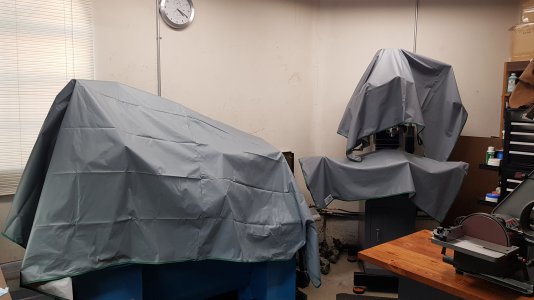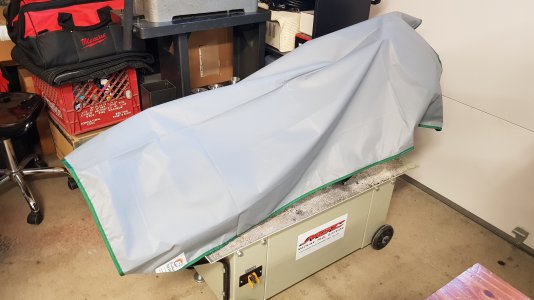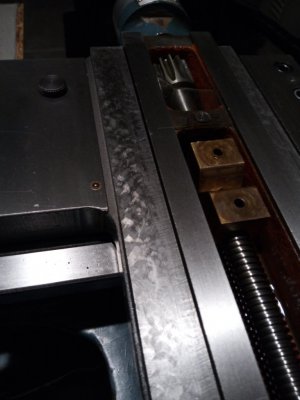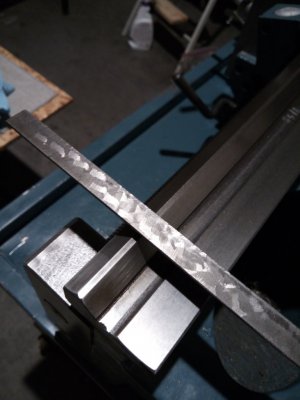- Joined
- Nov 27, 2012
- Messages
- 7,854
Hello all..
I'm in need of Tips & Tricks advice, whats the best cover for the lathe, it will be sharing space with other Wood Machine Tools... Not to mention this is Las Vegas, A warm dry dusty environment.. I would like to keep the lathe as ready for use as possible after sitting clean an all oiled up..
I'm sure the ways oil will attract wood and dust while sitting...? And i'm sure others have the same issue and solution, any suggestions would be appreciated.
Thanks Mike
Some people use bbq grill covers but they are limited sizes & most come in a fitted shape.
I use these covers by HTC called Tool Savers when I need to cover up my machines. They're breathable (although I don't have a humidity problem in my area) & they have magnets sewn into the corners to help keep them in place. They're not cheap compared to other things you can use but I like them. Prices have gone up a bit over the years though. I believe I got all of mine on Amazon. I've also got some smaller ones not shown.
(The one on the lathe shown below is their largest one & is not the size I normally use for it. I bought this jumbo one to try out, it's a bit too big for my liking. Not a big deal but it takes more work to fold it up & put away.)





